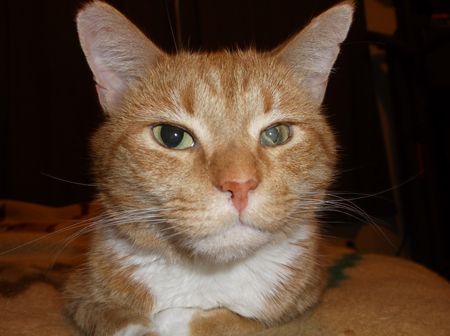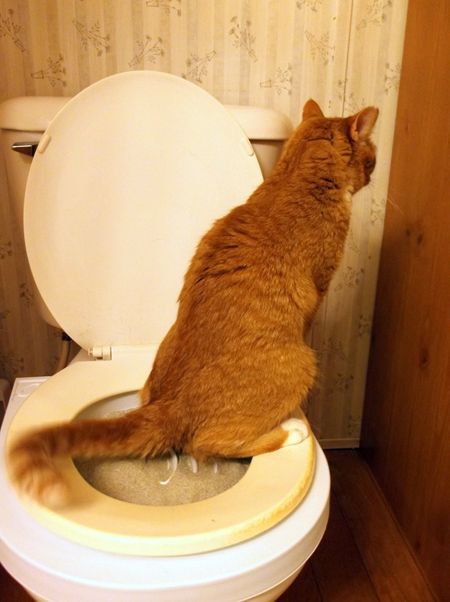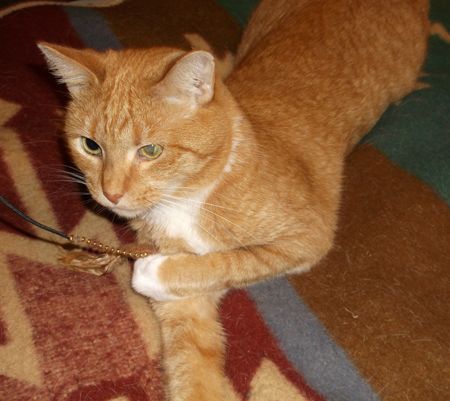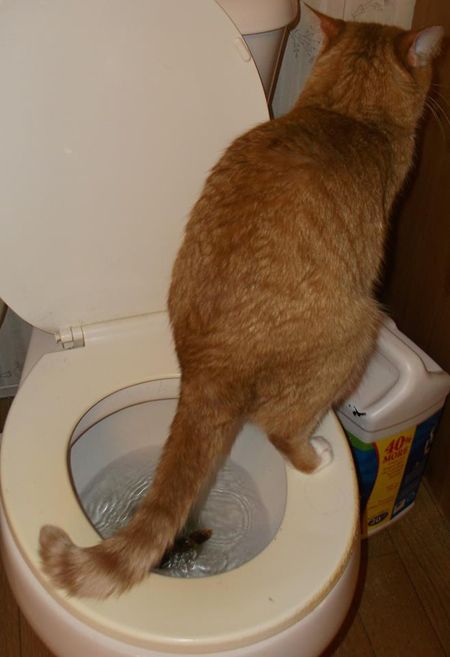How I toilet trained my cat
Sick of the litter box, this veterinary team member took control and toilet trained her kitty.
Next >
“Emma no!” I said to my 6-year-old beagle as I watched her digging in the cat’s litter box. Glancing back at me, she licked her lips and trotted shamefully to the sofa.
That was the day I decided enough was enough. The work, the time and the smell of the litter box had to go. But where? How? My 3-year-old cat, Artemis, had just learned to use the litter box after being a stray for most of his life. Besides that, he is FIV positive and blind in his left eye. For the safety of himself and the neighborhood cats, I could never let him outside. But how could I have an indoor cat without a litter box?
I racked my brain, but I was stumped. So I did the only logical thing I could think of. I Googled.
And that’s where I saw it. Page after page I found the success stories of cats who were toilet trained. I was hooked. I had to do it. Read the rest of my story—and see a photo gallery of Artemis toilet training—on the next pages.

Photos courtesy of Kelly Parmeter
I researched as much as I could before deciding on my strategy. Most of the advice I found was adamant about one, specific rule. It has to be done gradually over several months. I thought about that for a moment. Months to toilet train? Nah. I can do it in weeks, I thought to myself. It doesn’t really take that long, does it?
After a trip to the grocery store, I returned home with a pail of flushable cat litter and an aluminum foil roasting pan. I poured the litter into his box and placed it next to my bathroom door. He used it immediately. I gradually moved the litter box closer and closer to the toilet until it sat on top of the toilet seat. He hopped into his box and used it without question. I do admit, those stages may have gone quicker than the average cat would allow. Artemis had become accustomed to playing musical litter boxes after the beagle kept finding it.
Once he was comfortable with the location of his litter box, it was time to convert the toilet. To do this, I lifted the toilet seat and molded the roasting pan around the toilet bowl. Once it was form fitted, the seat was lowered and his litter box was poured into the roasting pan. The next day he was using his converted litter box with ease.

Now at this point in the process, I would like to provide some warning. Things are going to get messy. Your cat’s aim may not be the greatest. Litter will be thrown over the toilet seat and onto the floor. There were several times when his digging habits had slammed the toilet lid on top of him. The poor guy. Artemis battled on.
About a week later, I cut a 1-inch square hole in the bottom of the pan and folded down any sharp edges. He stepped through the hole a couple of times, but eventually learned to avoid it. Each week, I would cut the hole slightly larger until it was about 3 inches by 3 inches. It was at this point that he started urinating on the carpet. I had gone too fast and he was upset. Attempt No. 1 had failed.

By now, my family and friends had heard of my cat’s toilet training, and one of them offered me a toilet training kit, called the Citikitty. It was a hard piece of plastic that fits over the toilet bowl. It had perforated circles on the bottom that can be removed as he progresses. I brought it home, punched out the holes, filled it with litter, and set it on the toilet. Now I have to say, using the training kit was much easier, quicker, and cleaner than my homemade version. I continued increasing the size of the hole over the next couple of months until only the outermost rim remained. Artemis had made it to the final stage of his toilet training. The hardest part was over, I was certain of it. After all, the last stage of training had to be the easiest, right? Wrong. Every time I tried to remove the Citikitty from the toilet, Artemis just sat on the seat and cried until I replaced his precious training kit.
Now throughout this process, I have come to realize that it wasn’t the toilet that bothered him, it was the fact that he had nothing to dig. It wasn’t natural for him. Trying to reprogram centuries of evolution was not going to be easy.
After about three months of failed progress, he needed a little more help. I took the training kit out of the toilet, and sprinkled a line of litter on top of the toilet seat for him. I waited with anticipation. He jumped on the toilet, did several sniffs of the litter and started digging. Then he backed up to the rim and did his business. Success!

Over the next few weeks, Artemis routinely voiced his disappointment when he didn’t have enough cat litter on the toilet, but once he realized it was too much work to wait for me, he started using the toilet by himself. The entire process took about eight months for us to complete, and it was well worth the wait.

So through our journey together, I have learned several valuable lessons that I will use for any future toilet training. Lesson No. 1 is--you guessed it--to go slow. Lesson No. 2, invest in a training kit. It will save time and frustration. Lesson No. 3, be prepared for the long haul. Trust me, it will be long. It’s better to know that before you begin. Lesson No. 4, do not teach them to flush. I know it sounds like a great idea, but before you know it, your water bill will cost more than your mortgage. And last but not least, is lesson No. 5: Listen to your cat. They will tell you when they’re uncomfortable with something. Remember, your cat is doing this for your convenience. You will get much further if you do it together.
Kelly Parmeter is kennel supervisor at VCA Seaside Animal Hospital in Calabash, N.C.
